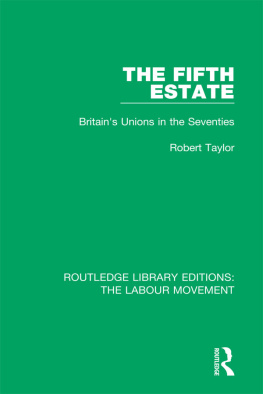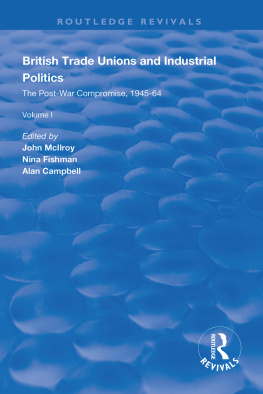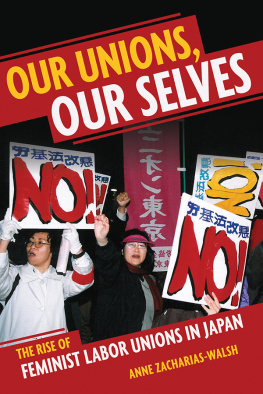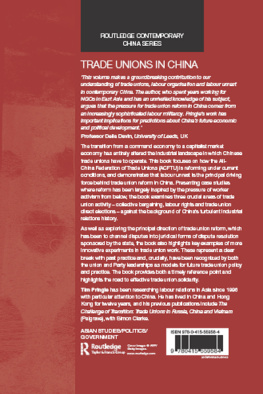Anne McBride - Gender Democracy in Trade Unions
Here you can read online Anne McBride - Gender Democracy in Trade Unions full text of the book (entire story) in english for free. Download pdf and epub, get meaning, cover and reviews about this ebook. year: 2019, publisher: Taylor & Francis, genre: Politics. Description of the work, (preface) as well as reviews are available. Best literature library LitArk.com created for fans of good reading and offers a wide selection of genres:
Romance novel
Science fiction
Adventure
Detective
Science
History
Home and family
Prose
Art
Politics
Computer
Non-fiction
Religion
Business
Children
Humor
Choose a favorite category and find really read worthwhile books. Enjoy immersion in the world of imagination, feel the emotions of the characters or learn something new for yourself, make an fascinating discovery.

- Book:Gender Democracy in Trade Unions
- Author:
- Publisher:Taylor & Francis
- Genre:
- Year:2019
- Rating:3 / 5
- Favourites:Add to favourites
- Your mark:
- 60
- 1
- 2
- 3
- 4
- 5
Gender Democracy in Trade Unions: summary, description and annotation
We offer to read an annotation, description, summary or preface (depends on what the author of the book "Gender Democracy in Trade Unions" wrote himself). If you haven't found the necessary information about the book — write in the comments, we will try to find it.
Gender Democracy in Trade Unions — read online for free the complete book (whole text) full work
Below is the text of the book, divided by pages. System saving the place of the last page read, allows you to conveniently read the book "Gender Democracy in Trade Unions" online for free, without having to search again every time where you left off. Put a bookmark, and you can go to the page where you finished reading at any time.
Font size:
Interval:
Bookmark:

| AGM | Annual General Meeting |
| APT&C | Administrative, Professional, Technical and Clerical Staff Group |
| BEOW | Branch Equality Officer (Women) |
| CCT | Compulsory Competitive Tendering |
| CFDU | Campaign for a Fighting Democratic Unison |
| COHSE | Confederation of Health Service Employees |
| DSO | Direct Services Organisation |
| EOC | Equal Opportunities Commission |
| FTO | Full-time Officer |
| HC | Health Care |
| HCSG | Health Care Service Group |
| HCSGE | Health Care Service Group Executive |
| LG | Local Government |
| LGSG | Local Government Service Group |
| LGSGE | Local Government Service Group Executive |
| LP | Labour Party |
| M&C | Manual and Craft |
| NALGO | National and Local Government Officers Association |
| NDC | National Delegate Conference |
| NEC | National Executive Council |
| NHS | National Health Service |
| NLGC | National Lesbian and Gay Committee |
| NUPE | National Union of Public Employees |
| NWCf | National Womens Conference |
| NWCm | National Womens Committee |
| RHA | Regional Health Authority |
| SG | Service Group |
| SGE | Service Group Executive |
| SOG | Self-organised Group |
| STV | Single Transferable Vote |
| SWOMP | Socialist Women on Male Platforms |
| TUC | Trades Union Congress |
| TUPE | Transfer of Undertakings (Protection of Employment) Regulations 1981 |
Introduction
Font size:
Interval:
Bookmark:
Similar books «Gender Democracy in Trade Unions»
Look at similar books to Gender Democracy in Trade Unions. We have selected literature similar in name and meaning in the hope of providing readers with more options to find new, interesting, not yet read works.
Discussion, reviews of the book Gender Democracy in Trade Unions and just readers' own opinions. Leave your comments, write what you think about the work, its meaning or the main characters. Specify what exactly you liked and what you didn't like, and why you think so.






